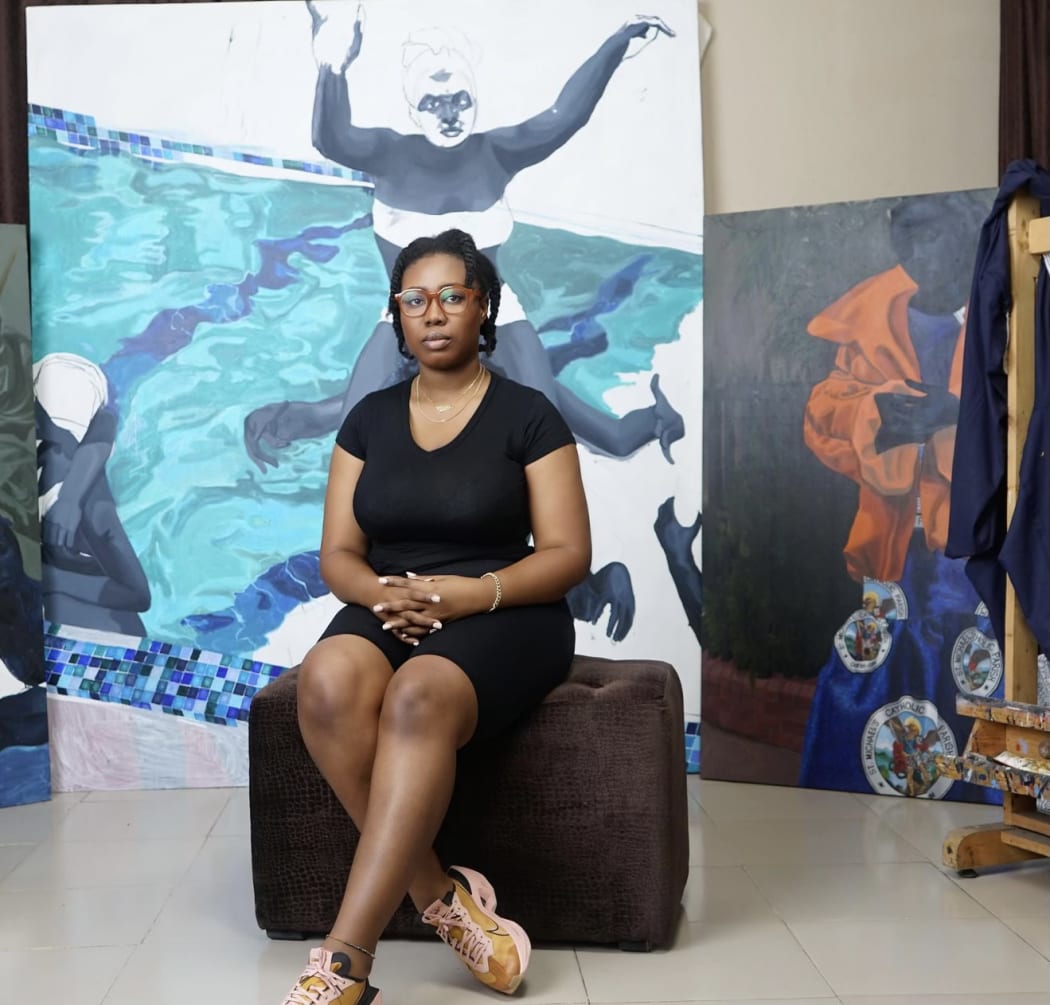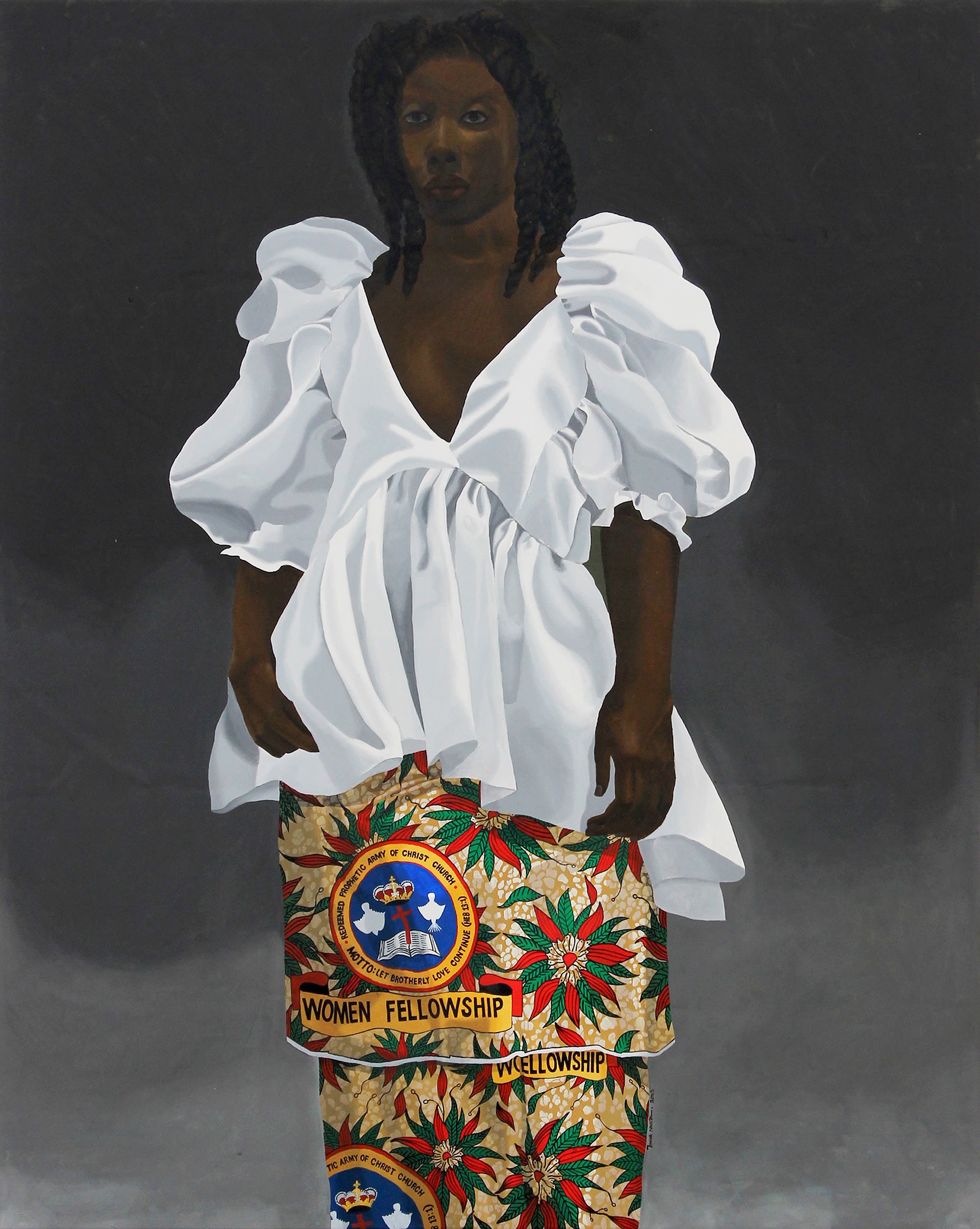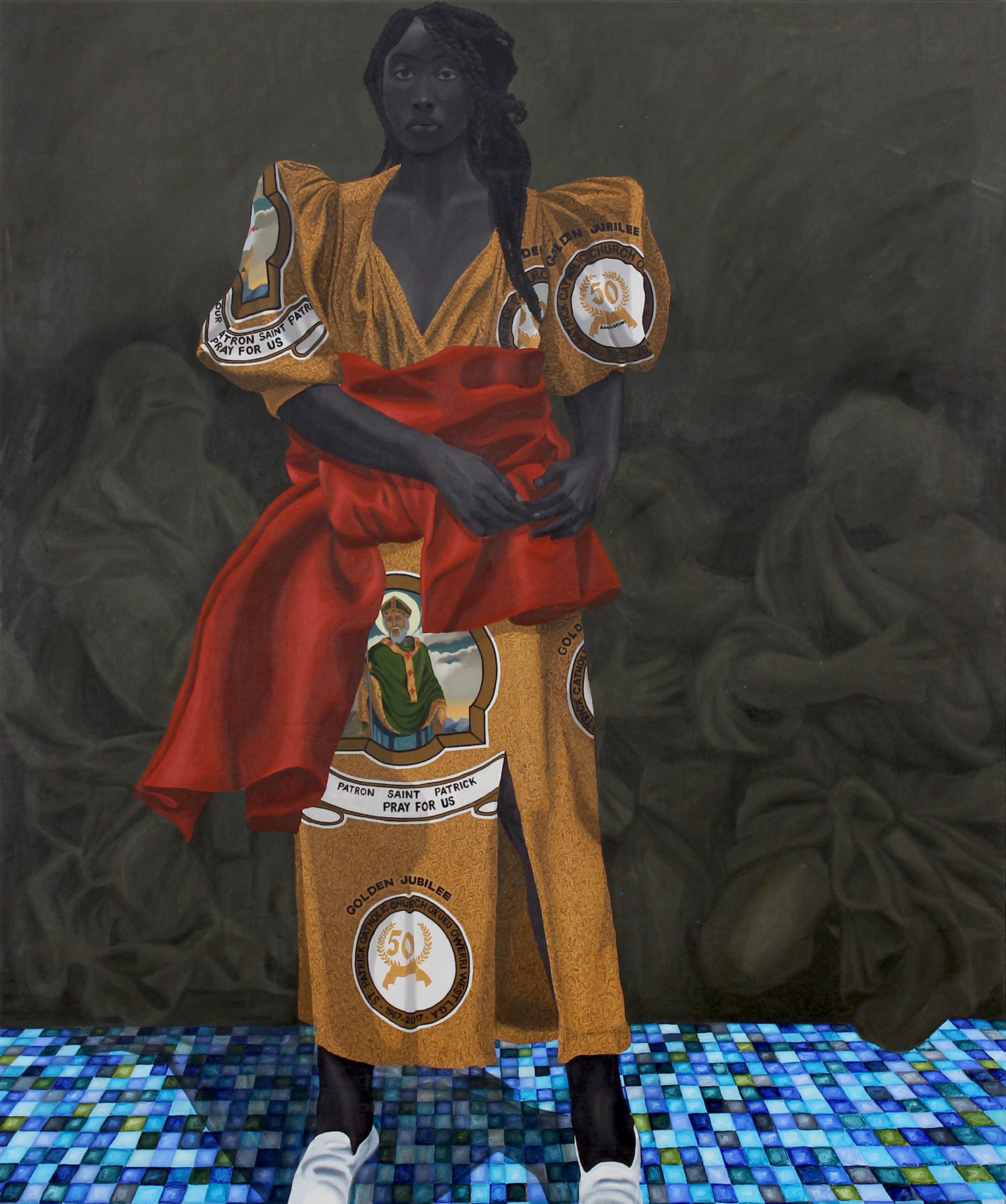
Just to start. Tell us please about your first interaction with art. Do you remember what artwork it was and what you felt when you saw it?
My first interaction with art was watching my paternal grandfather carve a masquerade mask and perform traditional dances and rituals in them. I felt fear and didn’t understand how special it was until I started falling in love with art in every form.
Your work has undergone a significant shift, starting from impressionism moving towards expressionism and now you are making something completely different, close to pop-art. Could you please comment on this transformation?
Transformation was necessary for me to find the style of painting that works for me. Under the tutelage of Mr Wallace Ejoh, a fantastic painter I trained with after university, I almost painted like him. This was because we shared a studio and shared ideas. As time moved on, I experimented with different ideas until I settled with this style I’m working with right now. I enjoy exploring and might continue to do so for a long time.
You're extremely precise and detailed manner, especially in depicting fabrics, resembles the still lives of Dutch Baroque painters. Have you been inspired by their works to some extent?
Yes, I am still influenced by Dutch Baroque Painters. While interning with Mr Wallace Ejoh, we studied Dutch Baroque artists and the concept of Chiaroscuro.
And in general, are there any specific artists you feel more connected to? Some artists that you admire or that have influenced your practice?
Some of the Artists i admire or have influenced my practice are Mr Wallace Ejoh, Marcelina Akpojotor, Ndidi Emefiele and Nengi Omuku.
You have once described your works as „joy in the midst of sadness and trauma“. Do you try to protect yourself from the harsh reality of life, using these bright bold colors as a kind of a „shield“ from the outer world?
I do not try to shield myself from the harsh realities of life, instead when telling sad stories through my paintings.

© Tonia Nneji, The welcoming minister, 2023, Oil on canvas, 152 x 122 cm. Image: Dominique Suberville
In the work The Welcoming Minister you have used a brilliant white – the colour which is often associated with purity, cleanliness and innocence, especially in Western culture. Does it have the same connotation for you?
The use of white in the work does signify purity for the Christian faith. In Nigeria, welcoming ministers are workers in church that are in charge of organizing and ushering in old and new members during church activities. Church workers around the world are often perceived to be pure in heart and should be without blemish (sin). Hence the reason I opted for white in the painting.
Speaking about the motives and colours, could you please tell us why some of your protagonists have purple or blue skin?
Some of my figures have blue skin because blue was my favorite color. Although, I am not sure if it still is.
Moving back to fabrics that play a significant role in your works. When you depict ankara , what meaning does this fabric have for you? (Editors’ note: ankara are Dutch wax fabrics decorated with African motifs popular in Nigeria)
For me, the fabrics serve numerous roles within religious societies in Nigeria, especially in Pentecostal and orthodox churches. they take on qualities from the associative to the commemorative. They serve as markers of events and periods, as well as tools of recognition, status and solidarity amongst members. I also see them as wearable stories.
Frequently you depict mystical ghost shadows in the background, using a fabulous chiaroscuro technique (Editor’s note: the use of contrasts of light to achieve a sense of volume), e.g. in The Feast Day 3. Who are they and what do they symbolize?
Yes, the mystical ghost shadows I usually portray are relief sculptures, typically found in European orthodox churches. I decided to portray them loosely, so as not to take the focus away from the figures In my paintings. They represent the European influence on Christianity, especially the Catholic Church, in my country, Nigeria.

© Tonia Nneji, The feast day 3, 2023, Oil on canvas, 182 x 152 cm. Image: Dominique Suberville
You have been struggling with a chronic Illness since over a decade. Do you think that your art practice would have gone in a totally different direction, if it wasn’t for personal health issue?
I really think it would have been the same or even better. With the ailment I am currently managing, I still have restrictions like compulsory rest days and hospital visits. Without my ailment, I would have worked faster but still on subjects about womanhood, healthcare and religion.
Besides exploring the relationship between trauma and the female body, you also investigate the role of religion in an African society. What does this religious context bring to your art?
Religion is a major part of the lifestyle of most women in Nigeria, especially in rural areas. To some women, the pastors and imams are more beneficial to them when ill than their doctors are. There is no way to tell a story about the trauma and the female body in Nigeria without including what influences the choices of most women. From what they wear, to how they tackle ailments.
Your work has been exhibited internationally. Do you feel the difference in the reception of your art, e.g. in Nigeria and the USA?
I do feel the difference in the reception of my works in Nigeria, the US/UK and the Middle East market. In Nigeria, the context of my works are easily understood and are seen as quite relatable. In the UK/US, I do more explanations. In both Nigeria and the UK/US, my works are very well received. In the Middle East, they simply cannot relate based on religious and traditional beliefs, which is also valid.
Could you please tell us a bit about your upcoming projects? What are you currently working on? How do you see your practice developing in the future?
I’m currently working on my second solo exhibition and a two-man show in Berlin. Not sure of the dates yet, but the gallery will announce when we are sure of our arrangements.
Interview conducted by Valentina Plotnikova